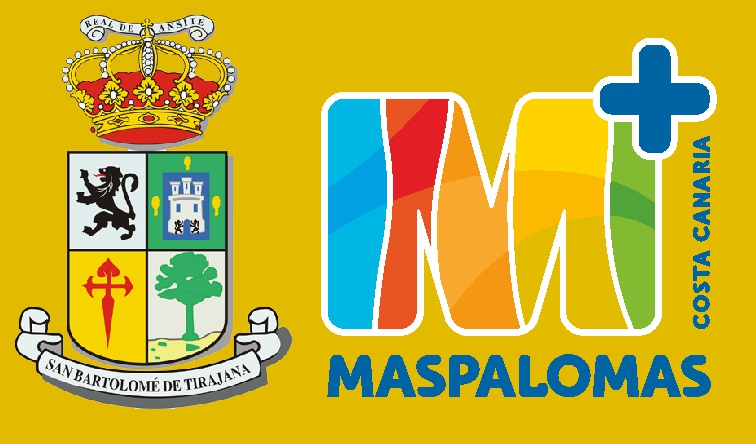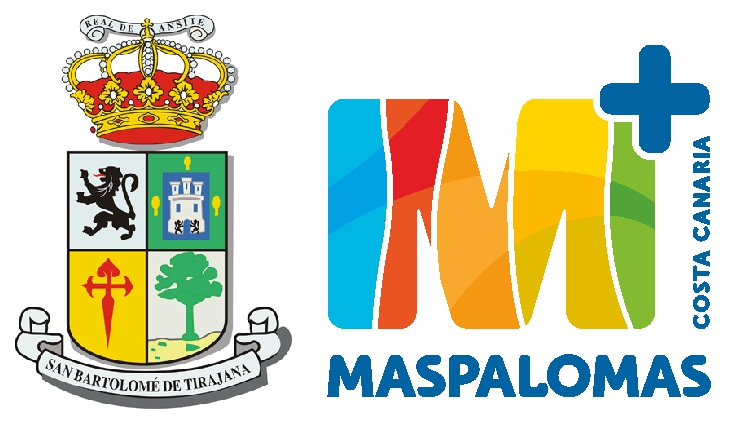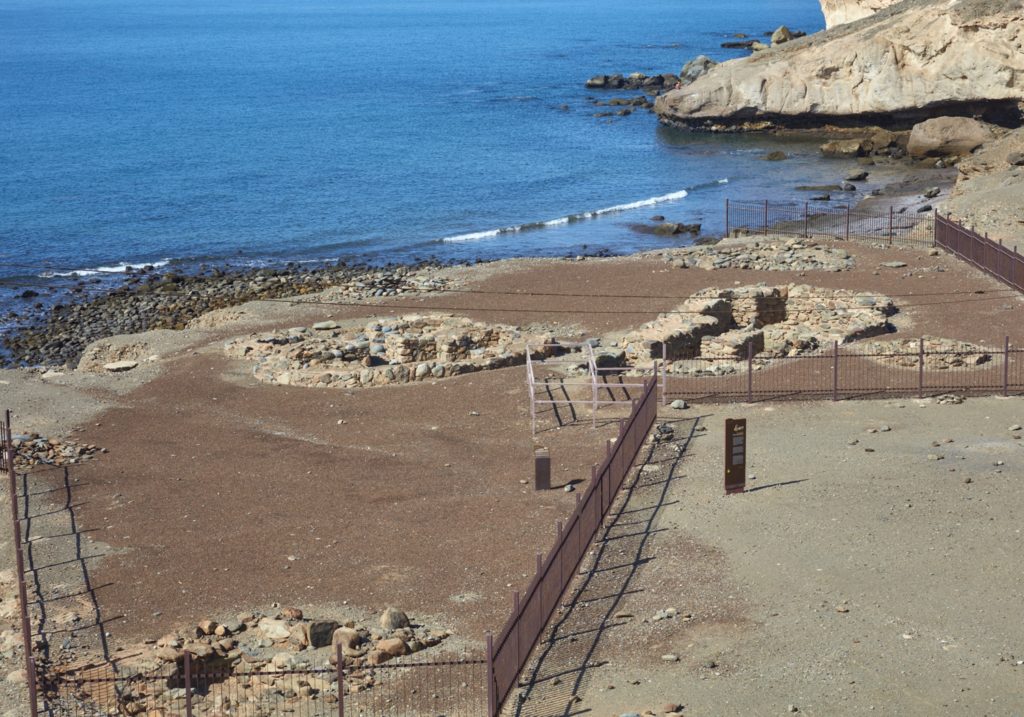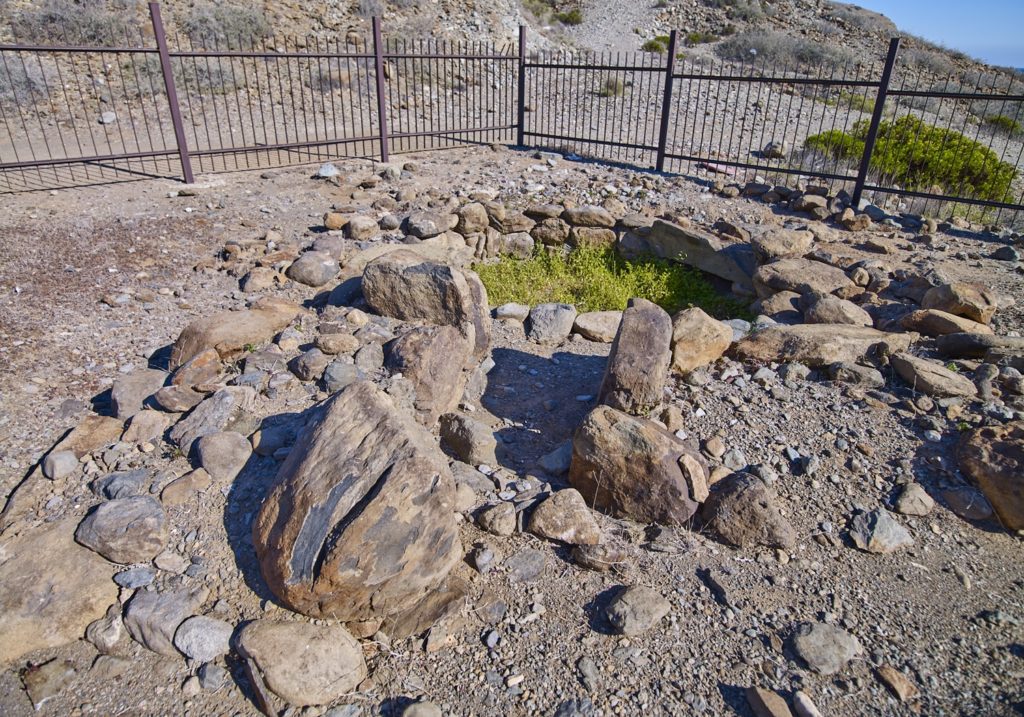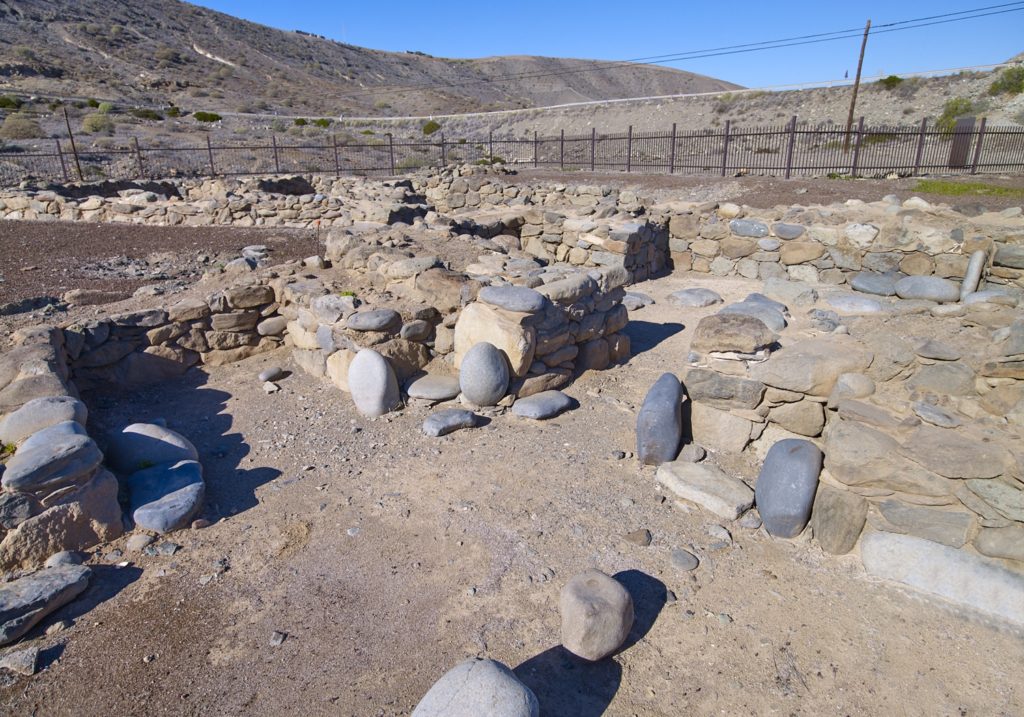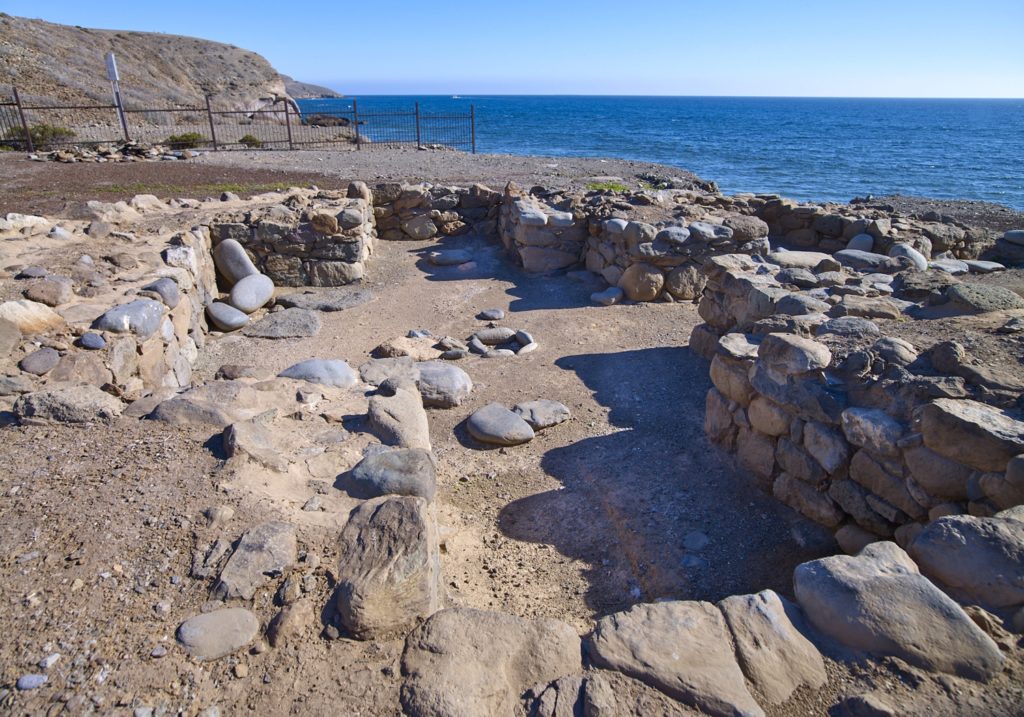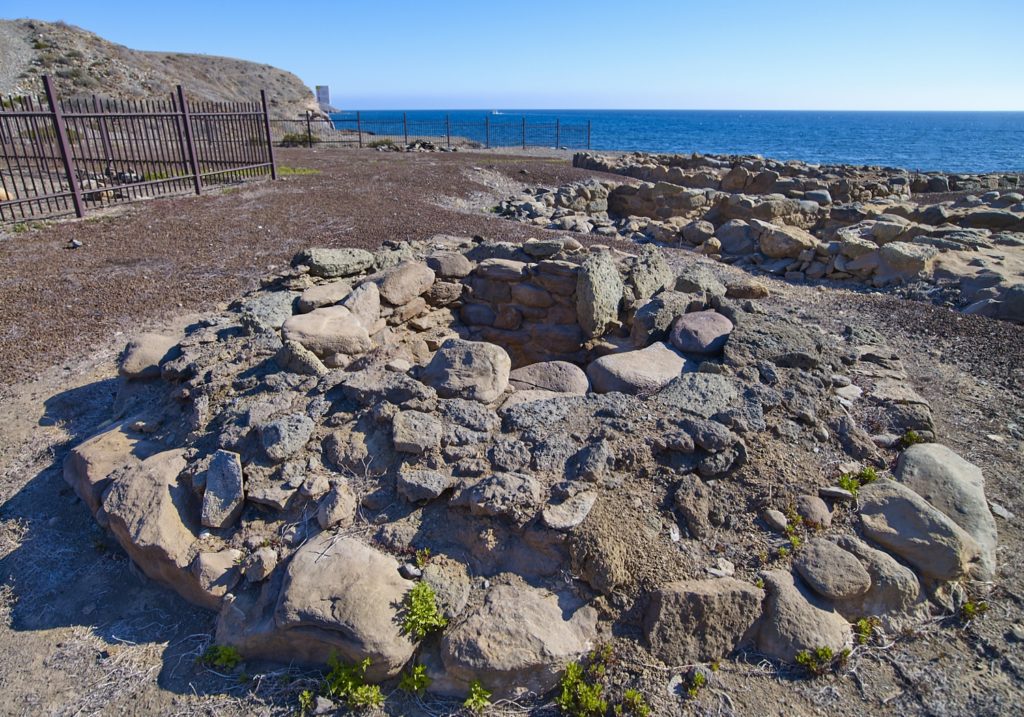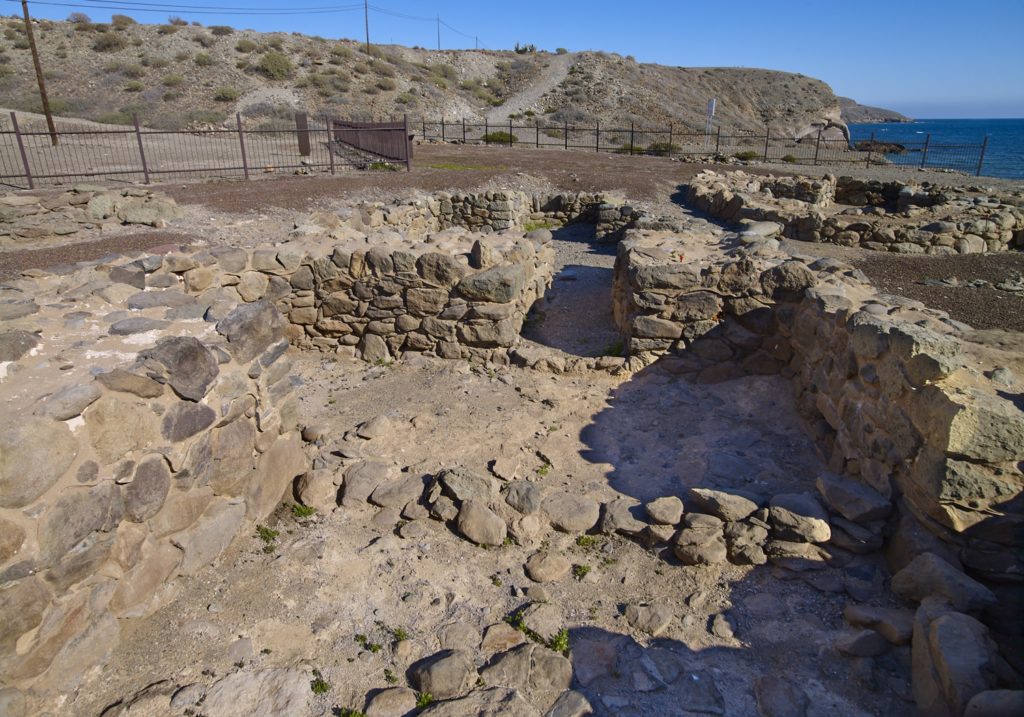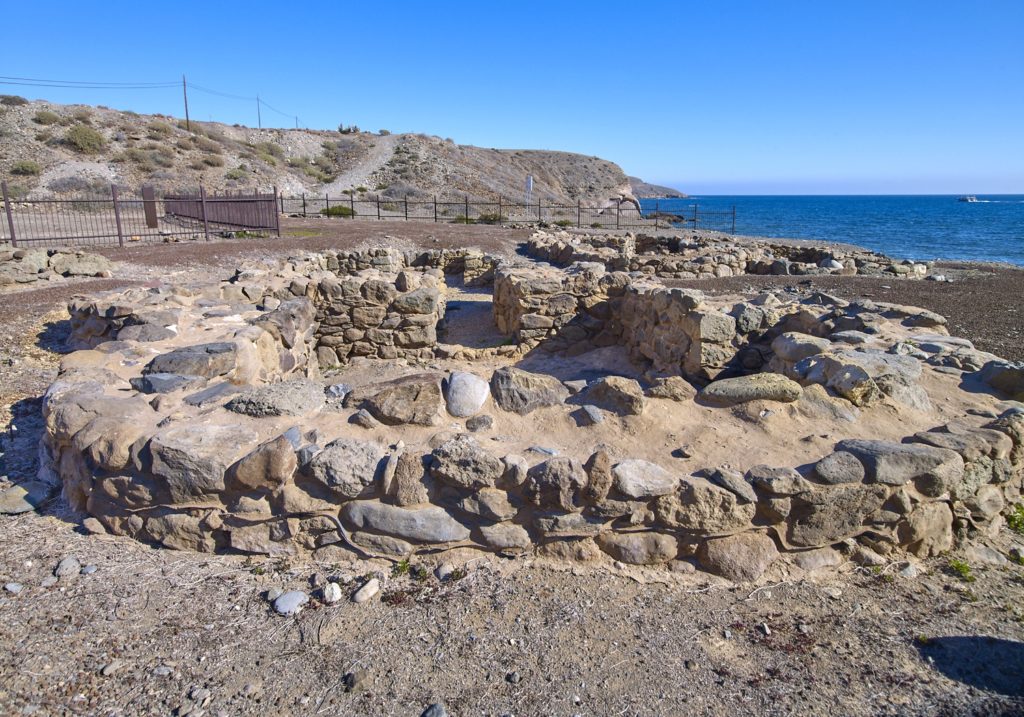El Llanillo
On the edge of Las Pimientas beach, on a small platform that rises above the sea, there is a small coastal town made up of a group of houses and burial mounds known as the site of “El Llanillo”, a settlement made up of constructions of surface of disparate functionality. The village is made up of the ruins of at least four stone houses, with cruciform floor plans, a couple of circular burial mounds and other structures, perhaps also houses, whose floor plan cannot be guessed because they are half buried.
The archaeological work carried out in recent years has exhumed the remains of six buildings in fairly good condition, among which are various domestic buildings and a funeral home. Among the enclosures, there is a house with a circular floor plan on the outside and a cruciform one on the inside, with the entrance facing southwest. Inside, the remains of a hearth in a bucket delimited by stones that occupies the central area of the main room were identified.
Next to this construction, in a northeast direction, there is a circular structure that presents as a distinctive feature its archaeological fill, which was basically made up of remains of ovicaprines and lithic industry. These characteristics suggest that it could be a space designed specifically for the handling and processing of domestic animals. Part of this complex is a funerary space made up of a large cist (more than 4 meters in its long axis) surrounded by an oval stone construction that surrounds it. Skeletal remains have been identified that raise the possibility that the enclosure functioned as a collective ossuary.
Like other archaeological sites on the island, this one shows traces of its reuse on dates subsequent to the end of the Conquest of Gran Canaria, as can be seen in this case by the presence of a lime oven (a circular construction near the dwellings) and by the changes in construction techniques and solutions introduced in the buildings, such as the lime pavement in one of the dwellings, for example.
The texts on this page are based on the Guide to the Archaeological Heritage of Gran Canaria, edited by the Cabildo de Gran Canaria.
